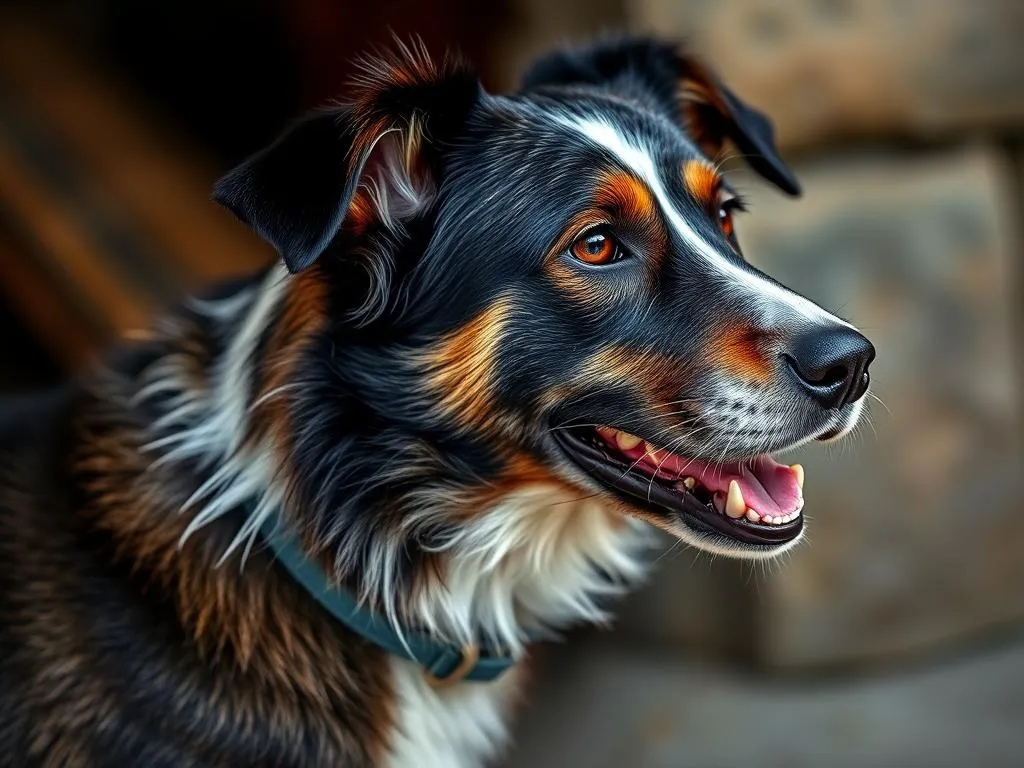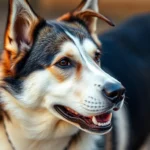
Introduction
Ancient dog breeds are those that have stood the test of time, with lineage tracing back thousands of years. These breeds offer a glimpse into the early days of canine companionship and illustrate how dogs have evolved alongside human civilizations. Understanding these breeds not only enriches our appreciation of dogs but also helps us grasp the historical context of their development, roles, and significance.
In this comprehensive exploration, we will delve into the history of dog breeds, their characteristics, notable examples, and the importance of preserving these ancient companions.
The History of Dog Breeds
Evolution of Dogs from Wolves
Dogs are descendants of wolves, and their domestication is one of the earliest examples of human-animal relationships. It is believed that the domestication process began around 20,000 to 40,000 years ago, when humans started to form connections with wild wolves. The process unfolded in several key milestones:
- Initial Contact: Early hunter-gatherers may have started to tolerate wolves, leading to mutual benefits. Wolves provided protection and aided in hunting, while humans offered scraps of food.
- Selective Breeding: Over generations, humans began to selectively breed wolves that exhibited traits more favorable for companionship and work, such as reduced aggression and increased sociability.
- Divergence: Eventually, these domesticated wolves evolved into various dog breeds, each adapting to specific roles and environments.
The Role of Ancient Civilizations
Ancient civilizations played a pivotal role in shaping the ancient dog breeds we know today. Different cultures valued dogs for various reasons, influencing their breeding practices:
- Egyptians: Dogs were revered in ancient Egypt, often depicted in artwork and associated with deities. The Saluki and Basenji are examples of breeds that can trace their origins back to this civilization.
- Romans: The Romans utilized dogs for hunting, companionship, and guarding. Their methods of breeding significantly influenced many modern breeds.
- Mesopotamians: Evidence of dog domestication in Mesopotamia dates back to 12,000 years ago, where dogs were used for herding and protection.
Migration and Spread of Dog Breeds
The spread of ancient dog breeds was greatly facilitated by trade routes and migrations. As people moved, they took their dogs with them, leading to crossbreeding and the emergence of new breeds. Geography also played a role; for instance, the rugged terrain of Tibet contributed to the development of the Tibetan Mastiff, while the flat plains of the Middle East favored the speed and agility of the Saluki.
Characteristics of Ancient Dog Breeds
Physical Traits
Ancient dog breeds often exhibit distinctive physical characteristics that set them apart from modern breeds. Some common traits include:
- Robustness: Many ancient breeds are physically strong and resilient, adapted to their environments.
- Unique Features: Breeds like the Chow Chow are known for their lion-like mane and distinctive blue-black tongue, while the Basenji is recognized for its tightly curled tail and smooth coat.
- Size Variability: Ancient breeds vary in size, from the small Basenji to the massive Tibetan Mastiff, showcasing a wide range of adaptations.
Temperament and Behavior
The temperaments of ancient dog breeds often reflect their historical roles. For example:
- Basenji: Known as the “barkless dog,” it possesses a unique vocalization and is independent, reflecting its origins as a hunting dog in Africa.
- Saluki: Bred for speed, this breed is known for its gentle demeanor and loyalty, making it an excellent companion.
- Akita Inu: Revered in Japanese culture, the Akita is known for its loyalty and protective nature, historically serving as a guard dog.
Genetic Diversity and Health
Ancient dog breeds typically exhibit greater genetic diversity compared to many modern breeds, which have been bred for specific traits. This diversity can contribute to better health and resilience. However, some ancient breeds do face health challenges due to their limited gene pools. Common issues include:
- Hip Dysplasia: A hereditary condition affecting many larger breeds, including the Tibetan Mastiff.
- Skin Conditions: Breeds like the Chow Chow may be prone to skin allergies due to their thick fur.
Notable Ancient Dog Breeds
Basenji
The Basenji, often referred to as the “barkless dog,” originates from the Congo. Its unique traits include a curled tail, erect ears, and a strong hunting instinct. Historically, Basenjis were used by African tribes for hunting small game. Today, they are cherished for their affectionate nature and minimal barking, making them popular in urban settings.
Saluki
Considered one of the oldest dog breeds, the Saluki has been associated with ancient Egyptian royalty. Known for its incredible speed and endurance, this breed was traditionally used for hunting game animals in open landscapes. Salukis are elegant and graceful, with a calm temperament, making them great companions for those who appreciate their gentle nature.
Akita Inu
The Akita Inu is a symbol of Japan, known for its loyalty and dignified demeanor. Originally bred for hunting large game, this breed has a cultural significance, especially relating to the famous Hachiko story, which exemplifies loyalty. Akitas come in various colors and possess a strong, independent character, making training essential for proper socialization.
Chow Chow
Originating in China, the Chow Chow is famous for its distinctive appearance, including its lion-like mane and unique blue-black tongue. Historically, Chow Chows were used for guarding, pulling carts, and even as a food source in some regions. Today, they are popular family pets, known for their aloofness and strong-willed personalities.
Tibetan Mastiff
The Tibetan Mastiff boasts a rich history as a protector of livestock and property in the harsh Himalayan environment. With a thick double coat and impressive size, they were bred to withstand extreme conditions. Modern trends have led to their popularity as luxury pets, but the breed faces challenges, including health issues and overbreeding.
Other Notable Breeds
Other ancient dog breeds worth mentioning include:
- Pharaoh Hound: Known for its striking appearance, this breed has roots in ancient Egypt and was used for hunting.
- Shar Pei: Recognized for its distinct wrinkles, this breed is believed to have originated in China as a guard dog.
- Irish Wolfhound: Once used for hunting wolves, this breed is known for its gentle temperament and large stature.
The Importance of Preserving Ancient Breeds
Cultural Heritage
Ancient dog breeds are integral to cultural identity and heritage. They represent the traditions and practices of various societies. By preserving these breeds, we safeguard the stories and legacies that have accompanied humans across millennia.
Biodiversity and Conservation
The conservation of ancient breeds is crucial for maintaining biodiversity within the canine population. Ancient breeds often have unique genetic traits that can benefit overall dog health and adaptability. Organizations focused on the preservation of these breeds work tirelessly to promote responsible breeding practices and educate the public on their importance.
Challenges Facing Ancient Dog Breeds
Despite their significance, ancient dog breeds face numerous challenges in the modern world:
- Modern Breeding Practices: The popularity of specific breeds often leads to overbreeding and a focus on aesthetic traits rather than health and temperament.
- Loss of Habitat: As urbanization continues, many of these breeds lose their traditional roles, resulting in fewer opportunities for natural behaviors and breeding.
How to Choose and Care for an Ancient Dog Breed
Considerations Before Adoption
Before adopting an ancient dog breed, it’s essential to consider several factors:
- Lifestyle: Evaluate your daily routine and home environment to ensure it aligns with the needs of the breed.
- Experience: Some ancient breeds require experienced handlers due to their strong-willed nature.
- Research: Understanding the breed’s history and requirements is crucial for a successful adoption.
Training and Socialization
Training and socialization are vital for the well-being of ancient dog breeds. Here are some best practices:
- Positive Reinforcement: Use rewards-based training to encourage good behavior, as many ancient breeds respond well to positive reinforcement.
- Early Socialization: Introduce your dog to various people, pets, and environments at a young age to foster adaptability.
Health and Nutrition
When caring for an ancient dog breed, be aware of specific health concerns:
- Regular Vet Checkups: Schedule routine veterinary visits to monitor health and catch potential issues early.
- Diet and Exercise: Provide a balanced diet suitable for the breed’s age, size, and activity level. Regular exercise is essential for maintaining health and preventing obesity.
Conclusion
Ancient dog breeds offer a fascinating glimpse into our shared history with dogs. These breeds are not just companions; they are a testament to the enduring bond between humans and their canine friends. By appreciating and understanding these historical companions, we can contribute to the preservation of their legacy for future generations. Engaging with local breed clubs or preservation efforts can further enhance our connection to these remarkable animals.









